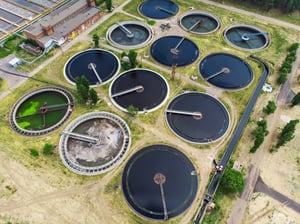 It’s been called “the canary in the coal mine”: testing raw sewage for traces of the COVID-19 can help track the disease’s circulation in a community—often well before the official case count is available.
It’s been called “the canary in the coal mine”: testing raw sewage for traces of the COVID-19 can help track the disease’s circulation in a community—often well before the official case count is available.
Feces produced by humans infected with SARS-CoV-2 contains traces of the virus’s genetic matter, even if the individual is not showing symptoms. And since a region’s wastewater is essentially a sample of its entire population’s waste, testing it for traces of the novel coronavirus can help monitor and track the disease’s spread.
Over the last few months, wastewater operators from Miami to San Diego have been collecting raw influent samples and sending them off to labs like Biobot Analytics, which specializes in sewage analysis. While wastewater operators should make use of appropriate PPE and follow all safety protocols when handling waste, by the time the virus reaches treatment plants the particles are no longer infectious. Moreover, there have been no confirmed reports of the virus spreading from feces to a person.
Information in the Sewers
While the process is still in development, early results indicate that wastewater testing could resolve some of the challenges presented by current clinical testing methods. Because individuals may be infectious for as long as two weeks before showing symptoms, and some may never experience symptoms at all, official case counts tend to lag well behind the virus’s spread. In addition, some people experience only mild symptoms and do not seek out a test, or cannot be tested for financial, geographic or test availability reasons. Wastewater samples, however, are not subject to such limitations.
Researchers in New Haven, Connecticut found that their wastewater results were “a seven-day leading indicator ahead of compiled COVID-19 testing data and led local hospital admissions data by three days.” That is, the amount of virus in sewer sludge goes up about a week before case counts do, and three days before hospitalizations increase. This sort of “early warning” could be crucial to stopping outbreaks early. Likewise, when Missoula, Montana reported zero new cases of COVID-19 in a four week span, the community’s wastewater test results backed up the virus’s absence.
Wastewater testing also has the potential to be used to track more narrow segments of the populations. Experts have proposed collecting samples at various points along the wastewater system to help pinpoint surges in at-risk neighborhoods or at major employers. And while wastewater testing is not without its costs, it is much easier and less expensive to test a community’s collective sewage than to conduct individual tests on an entire population.
A Public Health Resource
Similar methods have been used successfully to track a range of public health crises. Scientists have been tracking and informing responses to the opiate epidemic using wastewater testing for several years now. And a sewage surveillance system in Israel flagged a rare polio outbreak in 2013, allowing public health experts to halt the spread and vaccinate at-risk communities before any of the infected experienced major symptoms.
And as communities move towards reopening in the wake of the COVID-19 outbreak, leaders are tasked with protecting the lives and livelihoods of millions. Making the right decisions—when to reopen, where, and how—requires reliable data about the disease. Wastewater, and the unique public health insights it can offer, may help save lives.
As communities fine-tune this testing tool and identify new ways to assess the virus’s presence in specific locations, they’ll be relying on robust sewer system mapping and detailed design knowledge. Discover how WinCan can augment GIS data with detailed inspection reporting with a free demo:





